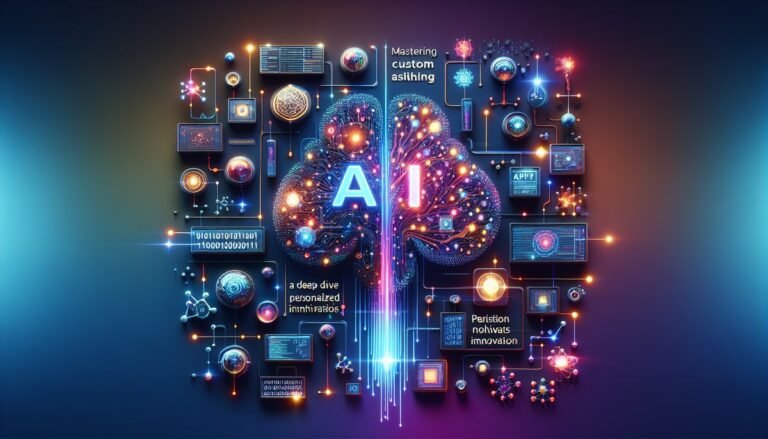In an era where the digital and physical realms increasingly collide, the story of Anthropic AI Models stands out as a testament to the lengths researchers will go to push the boundaries of Artificial Intelligence. The decision to dismantle millions of print books may seem drastic, but for Anthropic, it was a necessary step in crafting AI models that are both sophisticated and nuanced. This undertaking not only throws light on the evolving landscape of AI development but also raises thought-provoking questions about the intersection of technology, ethics, and tradition.
The Unconventional Path to AI Excellence
Anthropic’s journey to developing their AI models was anything but conventional. By deconstructing the contents of countless books, the company sought to imbue their AI with a depth of knowledge and understanding that mirrors human cognition. In essence, these volumes were not just sources of data but vessels of human thought and experience, encapsulating diverse perspectives across centuries. This approach signals a bold departure from traditional data gathering methods, which often rely heavily on digital sources. By tapping into the rich tapestry of print literature, Anthropic aimed to create AI that is both deeply informed and capable of nuanced reasoning.
Implications of a Book-Bound AI Model
The implications of building AI models from print books extend far beyond the technical realm. On one hand, the destruction of these physical texts sparks a debate about the preservation of cultural heritage. Books, after all, are more than mere collections of words; they are historical artifacts that tell the story of human civilization. On the other hand, transforming this vast repository of knowledge into a digital form could democratize access to information, making the wisdom contained within these texts available to a global audience in ways never before possible.
Weighing the Ethical Considerations
As Anthropic’s approach garners attention, it also invites scrutiny regarding the ethical dimensions of their strategy. The act of destroying books for data raises critical questions about the balance between innovation and preservation. While the potential benefits of advanced AI models are immense, the cost of losing tangible pieces of history cannot be ignored. This scenario underscores a broader ethical dilemma faced by tech companies: how to advance technology responsibly while respecting cultural legacies.
Furthermore, the choice to use print books rather than digital sources reflects a deliberate emphasis on quality over quantity. By selecting established works, the company aims to instill their AI with a level of reliability and insight that is often lacking in models trained on more ephemeral digital content. However, this strategy also highlights a tension between exclusivity and inclusivity, as not all voices and perspectives are equally represented in published literature.
Looking Ahead: The Future of AI Model Development
What does the future hold for AI model development in light of Anthropic’s pioneering efforts? This innovative approach may pave the way for other AI developers to explore similarly unconventional methods. As the field of AI continues to evolve, the balance between innovation and ethical responsibility will remain a central concern. Anthropic’s use of print books as a foundation for their AI models serves as both a bold experiment and a cautionary tale, illuminating the complex choices that lie ahead in the quest for technological advancement.
The Unconventional Path: Destroying Books for AI Development
The recent revelation that Anthropic, a cutting-edge AI research firm, destroyed millions of print books to develop its Anthropic AI Models, has sparked significant discourse in both technological and literary circles. This decision, while controversial, underscores a broader trend where the boundaries of ethical AI development are constantly being redefined. By dissecting this approach, we can better understand both the motivations behind such an extreme measure and its implications for the future of AI.
Why Sacrifice Print Books for AI Training?
The rationale behind Anthropic’s dramatic step lies in the quest for diverse and comprehensive data. Print books offer a treasure trove of structured language, cultural insights, and a vast array of information that is often richer and more nuanced than what can be found online. When developing AI models, the depth and variety of training data play a crucial role in shaping the intelligence and versatility of the AI. In this case, Anthropic likely sought to imbue its models with the broad spectrum of human knowledge encapsulated in print literature.
Analyzing the Ethical Quandary
While the benefits of using such a rich dataset are clear, the ethical implications of destroying books are less straightforward. Print books have long been regarded as cultural artifacts, embodying the history, creativity, and knowledge of societies. By eliminating these physical copies, Anthropic has ignited a debate about the value of preserving physical literature versus the advancement of technology. This situation raises questions about the trade-offs between cultural preservation and technological innovation and whether the latter justifies the former’s cost.
Hypothetical Outcomes: A World with AI-Powered by Books
Imagine a future where AI models, trained extensively on the corpus of print literature, are capable of understanding context and nuance akin to a human reader. Such models could potentially revolutionize fields ranging from education to creative writing, offering new tools for learning and artistic expression. For instance, a student could interact with an AI tutor that not only understands the facts but also the subtler meanings and themes in literature, providing a more holistic educational experience.
Potential Consequences and Criticisms
Despite the potential advancements, there are significant criticisms and consequences associated with Anthropic’s approach. Critics argue that the destruction of books is an irreversible loss to the cultural heritage that cannot be justified by potential technological gains. Furthermore, there is the concern of environmental impact, as the physical destruction of books contributes to waste and resource depletion. This raises the question: Could there have been alternative methods to digitize and preserve the information while still advancing AI technology?
- Environmental sustainability concerns due to the large-scale destruction of print media.
- Potential loss of irreplaceable cultural artifacts and historical documents.
- Debates over intellectual property rights and the ethical use of literature in AI development.
The Balance Between Innovation and Preservation
Anthropic’s decision to destroy millions of books for AI development highlights the tension between innovation and preservation. As AI continues to evolve, the industry faces the challenge of balancing the pursuit of advanced technologies with respect for cultural and historical legacies. This incident serves as a poignant reminder of the need to find sustainable and ethically sound methods for obtaining training data.
Going forward, it will be crucial for developers and policymakers to collaborate on creating standards that allow for the advancement of AI without compromising cultural values or environmental sustainability. The conversation initiated by Anthropic’s actions is a critical step in ensuring that as we push the boundaries of AI, we do not lose sight of the broader impact on society and the planet.
Looking Ahead: Future Directions for AI and Literature
The Anthropic case may well prompt a reevaluation of how literature and technology intersect. As AI technologies become more integrated into our daily lives, the need for thoughtful and ethical approaches to data sourcing will only grow. This situation highlights a potential opportunity for partnerships between tech firms and libraries or publishers, fostering new ways to digitize and utilize literature without resorting to destruction. Such collaborations could pave the way for innovative AI models while preserving the invaluable heritage of print literature.
In conclusion, while Anthropic’s choice to destroy books for AI model development has stirred controversy, it also provides a valuable lens through which to view the complex relationship between technological progress and cultural preservation. As we advance, finding a harmonious balance will be key to sustainable and ethical AI innovation.
Reimagining AI’s Literary Foundations
Anthropic’s decision to utilize millions of print books to develop its AI models highlights a bold and controversial approach to data sourcing. This strategy underscores the immense value that vast, diverse datasets hold in refining and advancing AI capabilities. However, it also raises significant questions about the ethical considerations and cultural impacts of such methods. By delving into conventional repositories like printed literature, Anthropic challenges the tech industry to reconsider the boundaries of innovation.
In looking toward the future, the industry must balance technological ambition with ethical responsibility. There is a compelling opportunity to explore alternative data sources that honor the integrity of original works while still driving AI advancements. Moreover, as AI continues to evolve, the need for transparent and sustainable practices becomes ever more critical. Ultimately, the future of AI may well depend on its ability to bridge the gap between cutting-edge innovation and respect for human creativity’s historical and cultural artifacts.
What is the controversy surrounding Anthropic’s use of print books?
The controversy stems from Anthropic’s method of destroying millions of print books to build its AI models, raising concerns about copyright infringement, ethical data use, and the cultural impact of digitizing literature.
Why did Anthropic choose print books for AI training?
Anthropic selected print books because they offer a rich, diverse source of language and information, which is crucial for training sophisticated AI models that require nuanced understanding and contextual learning.
How does this approach affect the AI industry?
This approach prompts the AI industry to reconsider the sources of data used in model development, highlighting the need for innovative solutions that balance technological progress with ethical considerations.
What are the potential benefits of using print books for AI models?
Using print books can enhance AI models by providing access to a wide array of language styles and topics, potentially improving the models’ ability to understand and generate human-like text across diverse contexts.
Discover New Avenues in AI and Technology
- Best Android Tablets For Car 2025
- Anthropic Copyright Trial
- How To Use Janitor Ai Roleplay Guide
- Viral Ai Tools 2025
- Ai Product Management Tools 2025
- Car Digital Gauges Smart Cluster
- Wireless Apple Carplay Guide






